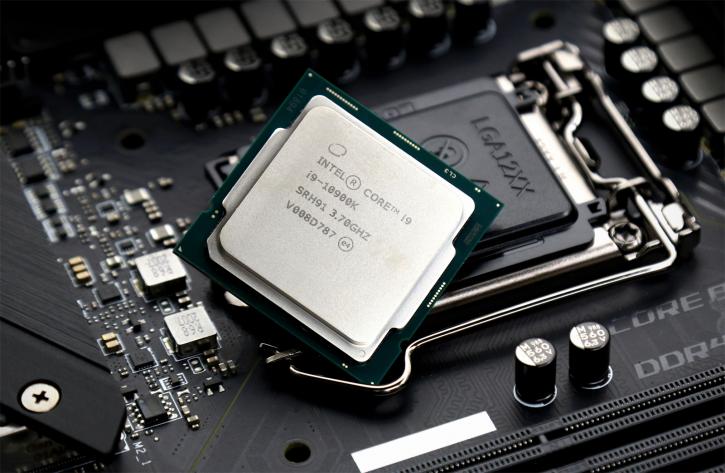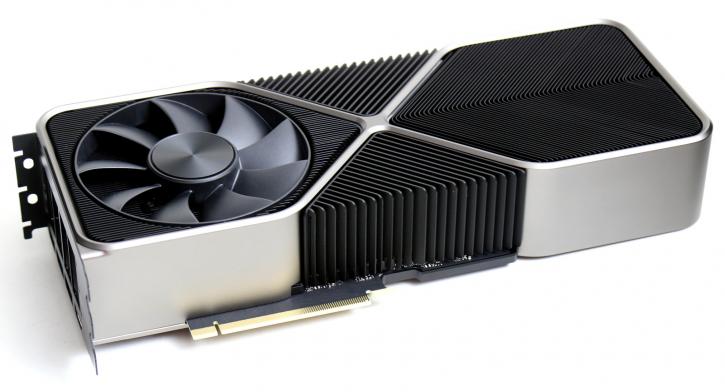The Extreme Build
The Extreme Build
There is no budget, here. We are going for the top of the range performance without a single compromise. A very brief intro, but I don’t think more explanation is needed, here.
CPU – AMD Ryzen R9 5950X or Intel Core i9 10900k
Some might be surprised to see the i9 10900k on here when – in the previous listing – I didn’t even mention the obvious contender, the 10700k. I will get to why I have done so later. The 5950X, though, is an obvious contender for an ultra-high-end PC. Even more so than the 5900X, no gamer needs 16 cores and 32 threads, but… admit it, we all want them. With Precision Boost 2 enabled (and, if you want, a little curve optimizer work), many users of the 5950X have reported boost clock speeds decently in excess of 5Ghz. For gaming, there really is no stronger chip out there, though there is no person on earth who could actually claim this is a gaming CPU (sorry, AMD). It has the added bonus of being able to double as a top of the range HEDT chip (as does the 5900X, though to a lesser degree), albeit with dual-channel RAM and max memory support of 128GB (not that 128GB is an amount of memory most people are going to find easy to max out).
So, why do I mention the 10900k? Tuning and overclocking, that is why. Whilst still on 14nm, Intel’s 10-core chip is still top tier for gaming, and – unlike the AMD rivals – has notable overclocking headroom. Those that wish to take the time to heavily overclock a 10900k will see it overtake the 5950X for pure gaming performance, though – if you are to do so – I strongly recommend custom water-cooling at the very least. Those eyeing the 10700k (1 tier down) may also wish to get into heavy tuning and overclocking. In that case, go for the 10700k over a 5900X or 5800X. Naturally, this is a process that can take some time and effort.
Motherboard (AMD)
Notice the no specific recommendation? This is because I am going to list a series of X570 motherboards and it can be up to you to pick whatever one you feel suits your needs. As an ‘FYI,’ they’ll range from c. $230 to $330. You can be assured that they will all share a common feature, and that is some of the most robust VRM arrangements on the X570 chipset. All will be able to handle a 5950X at stock with consummate ease, and – should you so wish – a maxed out 5950X on ambient cooling (that is to say, using conventional cooling without any sub-zero antics). The first recommendation is on the more ‘reasonable’ end of things, the MSI X570 Tomahawk. The B450 version of this board was so popular that MSI adopted the name into their X570 line. It retails for $230 as of the time of writing this article, and whilst you will find very little in terms of visual ‘bling,’ there are – in my view – few motherboards better at this price range. Aorus (Gigabyte) then, X570 Pro (Wi-Fi). Realistically, the difference between these boards at this level of money comes down to aesthetics. The final board is Asus’ X570-E Strix Gaming. Again, this has an exceptionally strong VRM, Asus’ traditional ‘Strix’ level of visual flair, and great build quality. MSRP for this board is c. $320.
In terms of things to look out for when comparing boards of this price calibre, look at the following:
- SLI support
- Internal USB headers
- Audio codec
- PCIe x16 slots.
Generally, the cheaper the board, the more likely it will be to lack SLI support, as well as have fewer x16 slots (e.g., the X570 Tomahawk has 2x PCIe x16 slots, whereas the Strix X570-E has 3x PCIe x16 slots.
I’m not going anymore expensive than the Strix. I really don’t see a need to. Sure, boards like the X570-F exist, or Asus’ X570 ‘Dark’ Hero, MSI’s X570 ‘Godlike’, etc. You do not need to spend more money than $330 on a motherboard for a build of this calibre, and even that amount of money is stretching things. Doing so would only be for electronic bragging rights!
Motherboard (Intel)
Generally speaking, the same advice applies to the Intel side of things as to AMD! Whilst a heavily overclocked 10900k (such as suggested above) will easily draw north of 180-200W under a full all-core load, mid-range Z490 boards will still be able to handle the chip with sufficient airflow. In terms of recommendations, look at the following three boards:
- MSI Z490 Tomahawk
- Aorus Z490 Elite
- Asus Strix Z490-E
The above also happens to be ordered in terms of price, so – if you’re in the market for a 10900k build and wish to take advantage of that overclocking headroom, look no further. Please just make sure, though, that your chosen case has sufficient airflow over the VRM! If you end up using a liquid cooler that doesn’t provide any kind of airflow around the CPU socket, make sure your fan configuration allows for enough air to be circulated around.
RAM
Whilst ‘strictly’ gamers only need 16GB of RAM, still, if you’re spending north of $3,000 on a computer, what is the extra $100ish on a solid kit of 32GB RAM? You don’t need it, sure, but it’s fun to have. In terms of specific recommendations, the same applies here as to the above PC. For the 5950X, stick to 3600Mhz CL16. If you want to go faster, go for it, just make sure to stability check it. For Intel, use the same logic. Generally speaking, Comet Lake-S can handle faster RAM speeds than Zen 3, though – as with any form of overclocking – this isn’t a guarantee.
Storage
There are a few candidates, here. The first (and probably most obvious option) is Samsung’s new 980 Evo M.2 drive, their first PCIe 4.0 venture. As we have come to expect from Samsung’s highest-end drives, the 980 Pro delivers where it counts. Blisteringly fast and with a 5-year warranty, there are few better options for a high-end PC build like this. It also supports native AES256-bit encryption, if that is something you desire. Your capacity needs will vary, of course, but the drive comes in your standard 256GB, 512GB, 1TB, and 2TB flavors. Perhaps the only thing going against the 980 Pro is relatively average endurance, but that shouldn’t be a problem for 99% of users just using the drive for gaming.
The second option comes from Western Digital, their SN850. It’s the grown-up brother of their very popular SN550 (a drive that I currently use in my PC, as it happens). Whilst very slightly slower than the 980 Pro, it is also slightly cheaper ($10-20 at the time of checking). It doesn’t support AES256-bit encryption, note, and some have noted it runs relatively hot under a sustained load.
Finally, a drive from Sabrent. Their ‘Rocket 4 Plus’ is a PCIe Gen 4.0 M.2 drive that can certainly hang out with the above mentioned two drives, though it isn’t quite as fast in terms of raw speed. To be honest, though, when you are talking about speeds in excess of Gen 3.0 drives could manage (they usually topped out at 3,200-3,500 MB/s sequential read and write), how much of a difference is the user going to notice? Again, the Sabrent drive doesn’t support AES256-bit encryption.
For Intel builds, there is little point in shelling out additional money for a Gen 4.0 drive. Options like the Samsung 970 Pro/Evo, Sabrent Rocket Q, Western Digital ‘Black’, and Crucial P5 are all very valid options. To be frank, those not requiring the speeds of Gen 4.0 drives could just as well opt for the above models on a 5950X build, thereby saving upwards of $60-70.
Graphics Card – Nvidia RTX 3090 or AMD Radeon RX 6900XT
I’ll say it straight up, I know the majority of people would rather go for the 3090. Whilst it is more power hungry and costs $500 more, the 3090 has… a lot going for it:
- 24GB of VRAM
- Stronger RT performance
- Nvidia DLSS
I feel compelled to say that the 24GB of VRAM really is excessive. Even if you’re gaming at 4k (a resolution the 3090 can happily operate at), I would not expect to see VRAM usage in any game top 10-12GB, period. The 3090 is, really, a ‘prosumer’ card that had the RTX label slapped onto it, and the VRAM count on it (14GB over the 3080’s 10GB) really is the proof of that, for me.
In terms of 6900XT advantages, it is approximately $500 cheaper than the 3090 and – at 4k – generally loses by about 5-8% (in our testing). At lower resolutions, it’s a more even fight.
RT is, for now, still not that widespread, but I also expect to see further adoption of that moving forward. For me, DLSS is the real game-changer. I have seen what it can do in Cyberpunk 2077 for my 3060Ti at 1440p, and it’s really quite extraordinary.
AMD’s RDNA 2 is a really big step forward for Radeon, and that is not in doubt. If AMD had a genuine alternative to DLSS (assuming the technology continues to be further adapted and developed), then the fights between the 3070, 3080, and the 3090 (and their Radeon counterparts) would – in my view – swing in AMD’s favor. As it stands now, however, Nvidia’s RTX 3000 series is probably the way to go for most people looking to buy a high-end GPU.
PSU
Nvidia recommends a 750W PSU for their 3090, and AMD recommends a 700W PSU for their 6900XT. These both seem sensible, as both cards are rated at or above a 300W TDP. Whatever card you get, I suggest 750W and being done with it, to be honest. If you are intent on heavily overclocking a 10900k with this build, then go for an 850W unit. The PSUs recommended in the above ‘High-End’ build will power this PC without a single issue, so they stay can stay well put. Note that you could well spend more than I am suggesting, here. Fully modular platinum or titanium rated power supplies are extremely expensive (especially in higher capacities), but you may well want to be spending that kind of money (if you have it) on a build of this caliber.
With that, we come to the end of the Q1 2021 Guru3D PC buyers guide. I hope you have enjoyed it as much I as have done writing it, and I really do enjoy writing them. This is where we will deviate, realistically, from the norm of this guide being meant for gamers.
- Sign up to receive a notification when we publish a new article
- Or go back to Guru3D's front page



